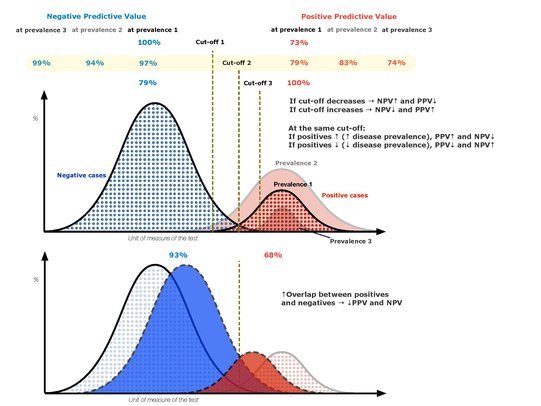This article needs additional citations for verification. (March 2012) |


The positive and negative predictive values (PPV and NPV respectively) are the proportions of positive and negative results in statistics and diagnostic tests that are true positive and true negative results, respectively.[1] The PPV and NPV describe the performance of a diagnostic test or other statistical measure. A high result can be interpreted as indicating the accuracy of such a statistic. The PPV and NPV are not intrinsic to the test (as true positive rate and true negative rate are); they depend also on the prevalence.[2] Both PPV and NPV can be derived using Bayes' theorem.
Although sometimes used synonymously, a positive predictive value generally refers to what is established by control groups, while a post-test probability refers to a probability for an individual. Still, if the individual's pre-test probability of the target condition is the same as the prevalence in the control group used to establish the positive predictive value, the two are numerically equal.
In information retrieval, the PPV statistic is often called the precision.
- ^ Fletcher, Robert H. Fletcher; Suzanne W. (2005). Clinical epidemiology : the essentials (4th ed.). Baltimore, Md.: Lippincott Williams & Wilkins. pp. 45. ISBN 0-7817-5215-9.
{{cite book}}: CS1 maint: multiple names: authors list (link) - ^ Altman, DG; Bland, JM (1994). "Diagnostic tests 2: Predictive values". BMJ. 309 (6947): 102. doi:10.1136/bmj.309.6947.102. PMC 2540558. PMID 8038641.